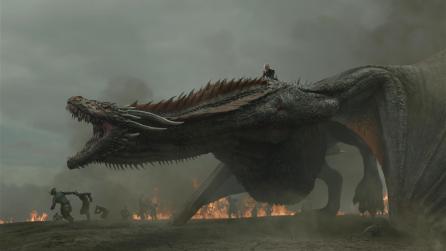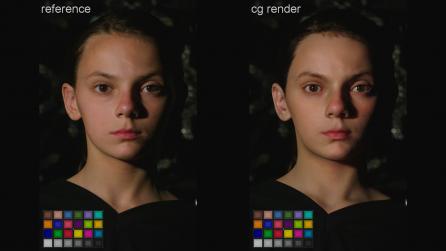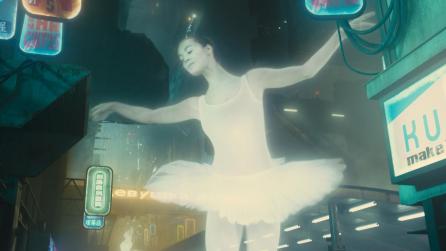Film and TV
The Shannara Chronicles: creating CG for episodic TV
How SPIN VFX create breathtaking CG on a super-tight timeline
From fire-breathing dragons soaring over Westeros, to demogorgons bursting forth from parallel universes: ambitious, high-concept story elements are seeping through television.
TV audiences now expect an immersive experience, with VFX that match the quality they see in feature films.
For those making these CG-heavy TV productions, there are two considerations that determine what’s possible: do we have the tools to create CG at the high resolutions required? And can we do it in the shorter timescales TV production demands?
Calling SPIN VFX
One such studio that has first-hand knowledge of these challenges is Toronto-based SPIN VFX, who we have spoken to previously about their work on popular sci-fi TV series The Expanse (Syfy).
Andrew McPhillips, Head of CG at SPIN, says the rise of high-res consumer tech has had a significant impact across the board there: “It’s impacted lighting and look development in necessitating a resolution change all through our pipeline. From modeling, painting textures, rendering, compositing, right through to how we run dailies in our screening rooms.”
“For studios like SPIN VFX with very advanced PBR look-development pipelines, 4K work has been a wonderful thing. It allows us to showcase our detailed work in ways that other studios might struggle to.”
SPIN’s CG Producer Chris Cox loves creating CG in the fine detail 4K demands, but he also points out that working to these higher resolutions means mistakes can become costly: “Although 4K is becoming the standard, we have less room for error on large frame counts when the render proves expensive at 4K”, he says.
Because of this, it’s imperative that SPIN has tools in place to handle 4K res - like 3D painting software Mari: “It’s important to test textures at actual resolution to confirm the work is holding up; Mari allows us to reach the required resolution relatively easily.”
“Less room for error due to expensive renders means the artists and managers must triple check their work, so that downstream departments like Lighting aren’t wasting expensive renders on incorrect work. As render costs creep up due to resolution, airtight pipeline and standard procedure is a must.”
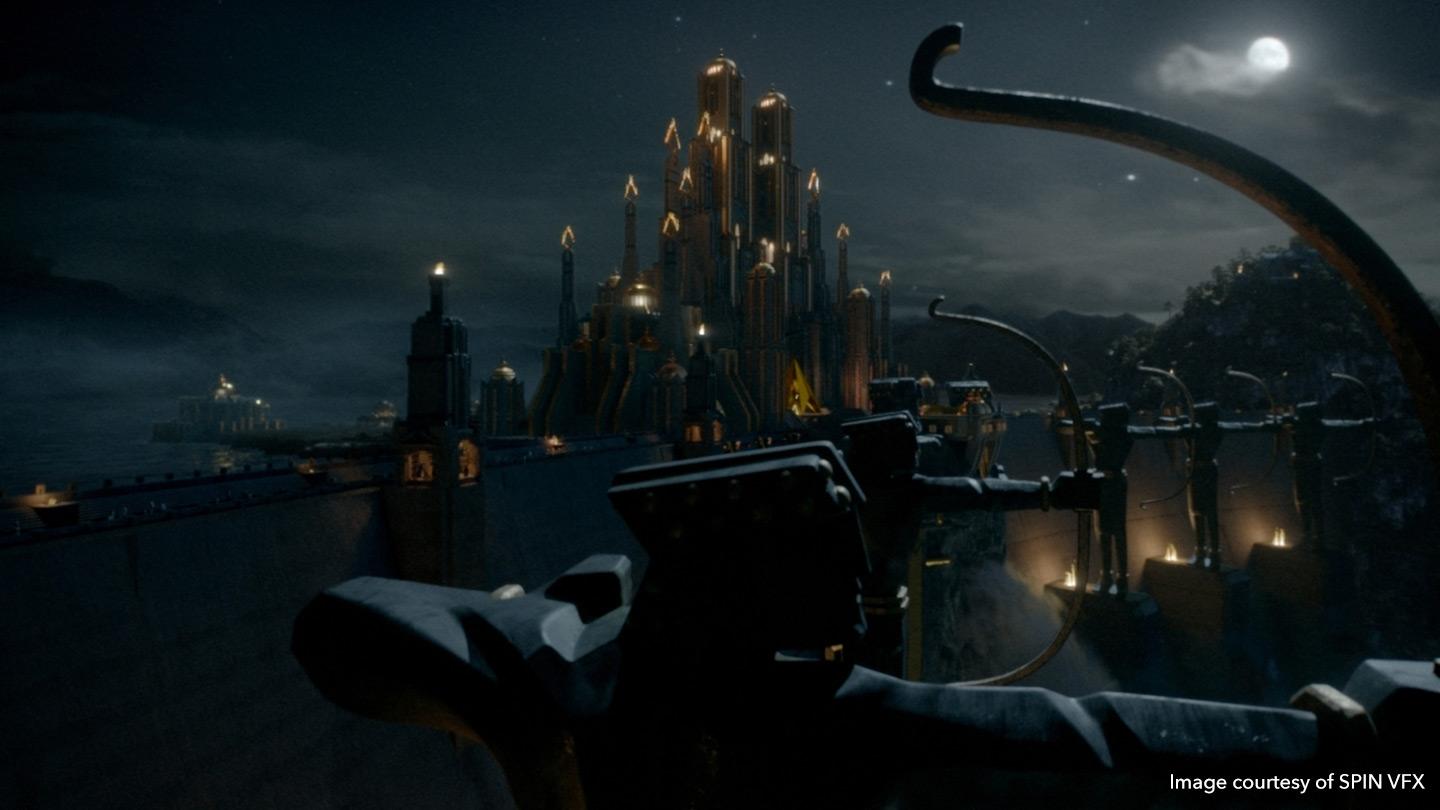
The Shannara Chronicles
SPINs most recent TV project is a CG-heavy fantasy episodic: The Shannara Chronicles. As Andrew explains, the team have been relishing the opportunity to show what they can do: “The Shannara Chronicles is a very popular fantasy drama series filmed in New Zealand. For our environment team, the ‘Lord of the Rings’ scale of the show was a great opportunity for us to develop and showcase our environment work.”
Creating epic landscapes under TV production time constraints is no mean feat, Associate CG Supervisor Mark Krentz says: “The challenge was the timeline for the scale of the task. Using the concept art, we were able to model and sculpt the massive landscapes loosely and quickly to drop our cameras in to access the asset builds.”
“The large topological shapes of the environment were most important to lock down first. It was important to get client approval quickly so we could divide and extract the shapes to create the published proxy geo and re-import them back into the environment for layout to fine tune.
“With the proxies made, we could easily pass out the assets to the entire floor to build using the proxy boundaries as their guide. As the hi-res geo came in we could quickly swap them out to check that they stayed on model and still compositionally worked for the shots.”
Compared to The Expanse, says Krentz, the extensive kingdom of the Shannara Chronicles was on another level in terms of workload.
Senior Lighter, Modeling and Texture Artist, Inna Itkin, recalls how the team harnessed the power of Foundry’s look dev and lighting toolset to get the job done: “Katana’s ability to handle heavy geometry enabled us to work efficiently and concentrate on artistic challenges instead of dealing with technical issues,” she says.
In fact, Katana lies at the heart of SPINs look development and lighting pipeline: “We chose Katana because it’s an amazingly scalable and flexible lighting and rendering solution”, McPhillips says.
“We were the first studio of our size to adopt Katana, and it’s the cornerstone of all the work we create.”
“Lighting and look-development artists want dedicated software to do their work. Clients demand increasingly complex visuals. Katana allows our artists to realize our client's creative vision without endless wrestling with technical problems that non-bespoke lighting tools are crippled from when working on complex scenes.”
“We want lighting artists to be artists and clients to demand the most challenging imagery from us that they can. Katana allows for both.”
For the texturing and painting work, the team used Mari. Ryan Cromie explains how Mari’s ability to paint across multiple UDIMs at once led to some pretty impressive results: “One of the assets that required a fair amount of detail was the Leah Dam. It was a large set with over 150 UDIMs, and had to work for establishing shots as well as for closeups.”
Muscle and skin
On top of the environments, the SPIN team were tasked with creating a multitude of colourful characters for The Shannara Chronicles: “Our muscle and skin pipeline was pushed to the max in creating the challenging characters we developed”, McPhillips says.
“We build characters from the inside out, with bones, simulated muscles and sliding skin.”
As Cromie explains, one of the biggest challenges when creating a character is making the skin look believable: “The key to realism lies in the subtle details, and Mari allows us to project the finest of pore information onto our model and fine tune infinitely.”
Concept Supervisor Cesar Dacol Jr. agrees: “Skin is one of the most dynamic and difficult things to create. Its ever-changing properties throughout our lifetime make it a lifelong pursuit to understand”.
“Our approach the skin begins underneath and not on the surface. Understanding anatomy is undeniably the most important component. We must first understand why wrinkles form, how muscles contribute to their formation, and where anchor points force compression”, he says.
“The beautiful thing about Mari is that once you gain that ‘internal knowledge’, you have masterful control over the exterior, so that you can place wrinkles in the proper locations.”
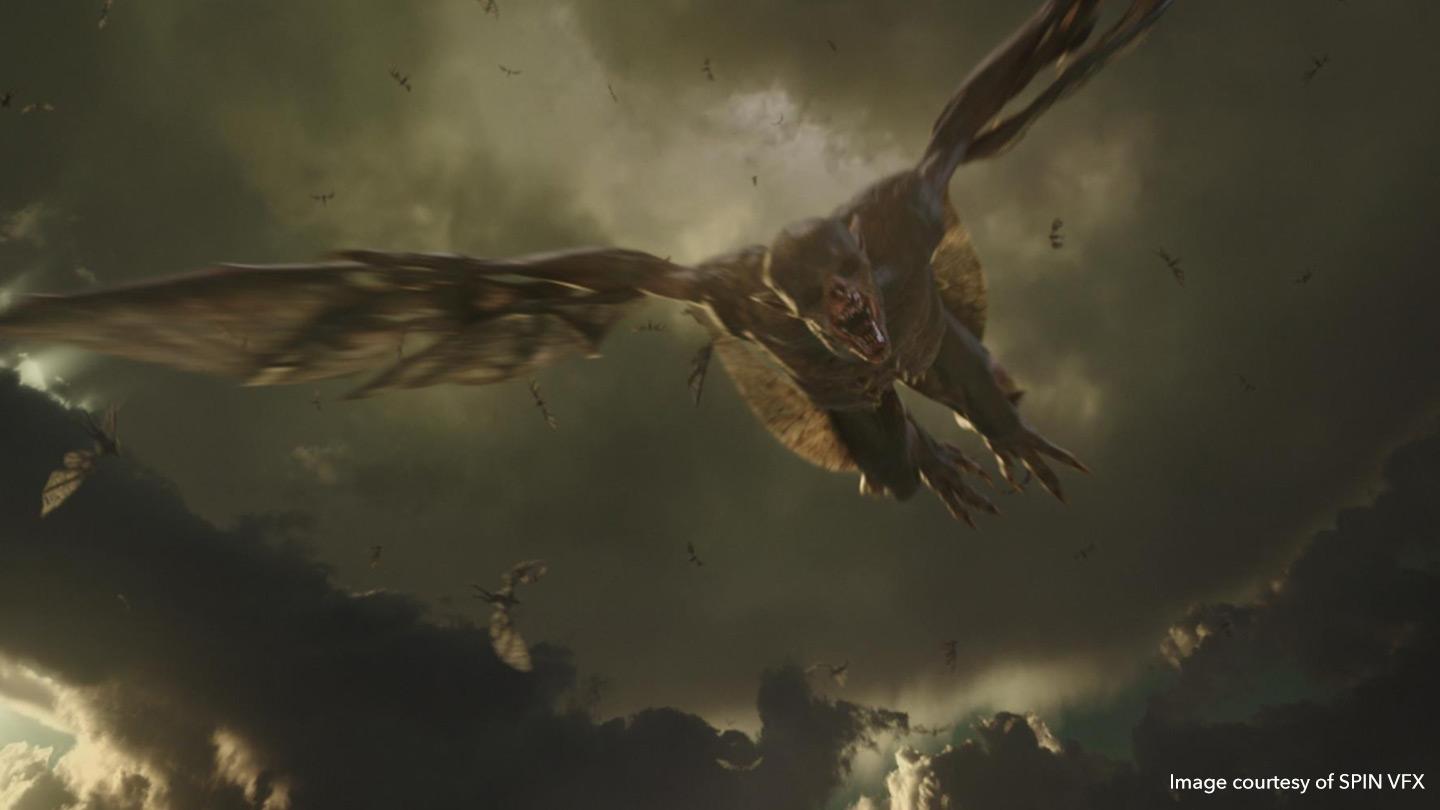
The race against the clock
Armed with the right tools, SPIN are in the perfect place to deliver high-quality CG at the level of detail their clients require.
But what about the other hurdle to overcome? As Josa Porter, Supervising Producer at SPIN explains: “One of the main challenges is the timeline. Television storytelling is becoming on-par with the creative of feature film, however your timeline is much compressed, which makes your prep, execution and problem-solving very different than on a feature timeline.”
The answer for SPIN lay in choosing tools which connect and work together seamlessly, and which can scale up on demand: “Using a scalable, flexible, bespoke lighting and look-development tool like Katana, that’s in the same pipeline ecosystem as Mari and Nuke, allows us to hit our clients increasingly challenging vision. Speed, iterations and timely feedback is very important in episodic television work.”
For artists like Cromie, inter-connectivity like this was key to saving time: “Inside Mari's viewport we can see our textured asset lit with the same hdri that we use in Katana. This gave us immediate feedback on our texture maps and saved us a tonne of time by limiting the back and forth between programs and departments.”
Giving artists the power to work across multiple shots at once is another crucial way SPIN were able to deliver at the pace required: “In television work, the edit can be constantly changing. We want to be able to supply rapid updates across all scenes. Not for just one or two shots at a time, but across the entire show“, Andrew explains.
“The graph state variables within Katana allow an artist to work on literally hundreds of shots simultaneously. At SPIN VFX, we typically work on entire sequences at a time. One artist develops the look for dozens or even hundreds of shots together. Clients can see all of their shots in context for continuity. Scenes are brought up as a whole, not just one or two selected key shots.”
For the client, this gives the much greater visibility into the project: “When a client knows that the approach is global they understand that in a sequence like the Cave Dweller, the lighting is correct overall”, Porter says.
“You can then assess all together, and you can then make individual tweaks as needed for a better shot/sequence. Review times may be higher initially as you are able to look at a sequence, but in the long run your time is condensed as you don’t have to go back and check shots against one-off lighting approved days before (that may no longer have continuity)”.
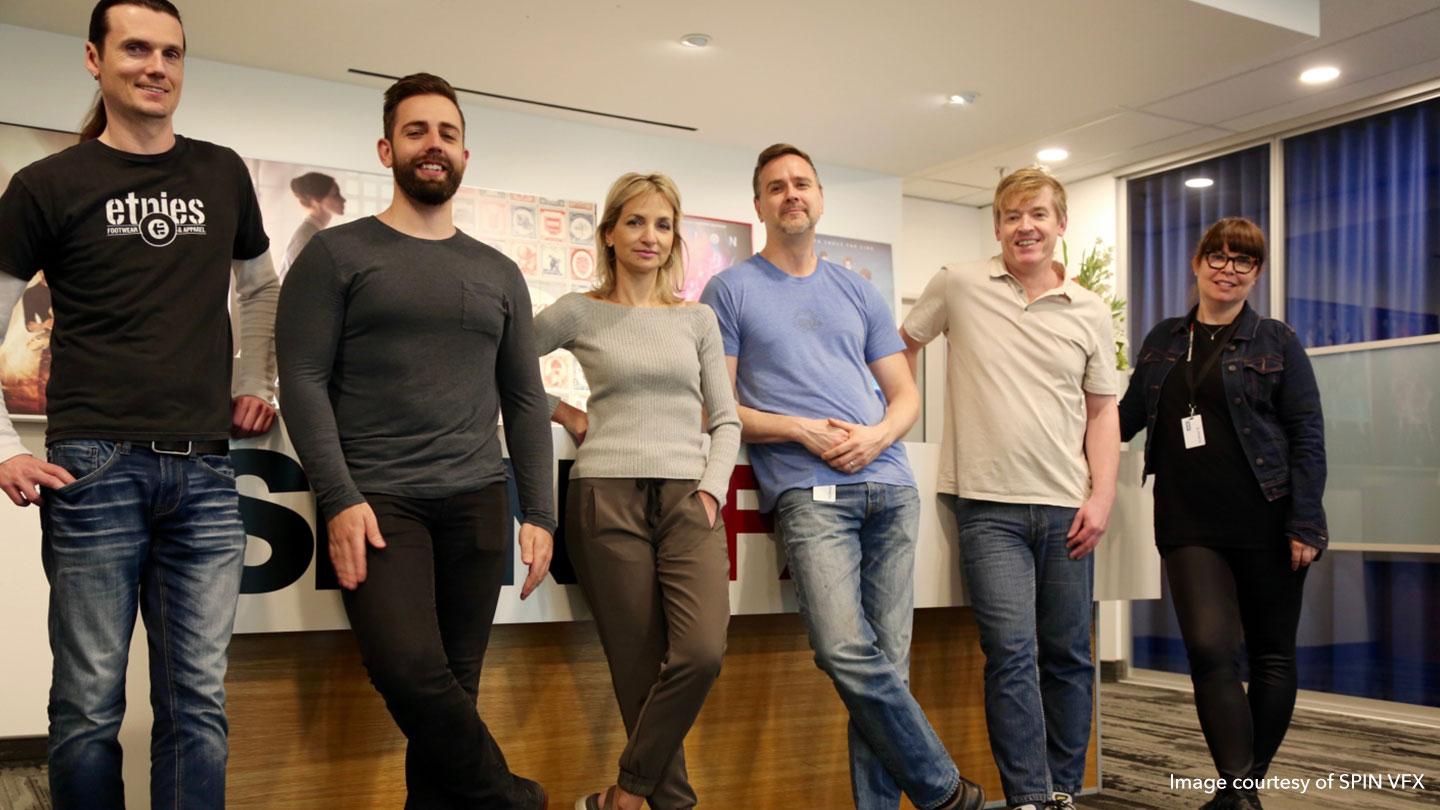
In turn, this gives SPIN a competitive edge: “Most other studios using general, non-bespoke lighting/look-dev tools are not able to provide this level of quality or turnaround speed on so many shots simultaneously”, says McPhillips.
“Utilizing Katana within our proprietary pipeline has allowed us to maximize this workflow.”
There’s also a time-savings made in the faster scene load times Katana has developed a reputation for: “Using deferred loading, Katana allows us to easily work with very heavy scenes and begin lighting immediately”, he goes on.
“We don’t need to wait for large amounts of geometry to load in a scene file - which would be impossible in other software.”
Small studio packing a big punch
Ultimately, the ability to produce high quality CG to tight timeframes, combined with great client experience and competitive budgeting, opens up a whole raft of projects SPIN VFX can bid for: “Compared to other midsize studios, we have relatively lean lighting staff at SPIN VFX,” Andrew notes.
“Despite this, we’re able to deliver hundreds of shots per week from our amazing lighting team to very happy clients..”
Josa agrees, and points out that this amounts to more time spent on what matters - the artistry: “When you have more time, you can allocate that right back to the creative, and your bar can be set that much higher for your final product”, she says.
“When you find a process that redefines your assumptions of scope, you have the fulfilling opportunity to achieve your best work. When your process and pipeline is properly equipped for the next big project, you can exceed expectations by quickly delivering a final shot that is both high-quality, and creatively captivating.”
Want the freedom to fully explore your creative options? Get a free 90-day Katana trial and a free 30-day Mari trial.
